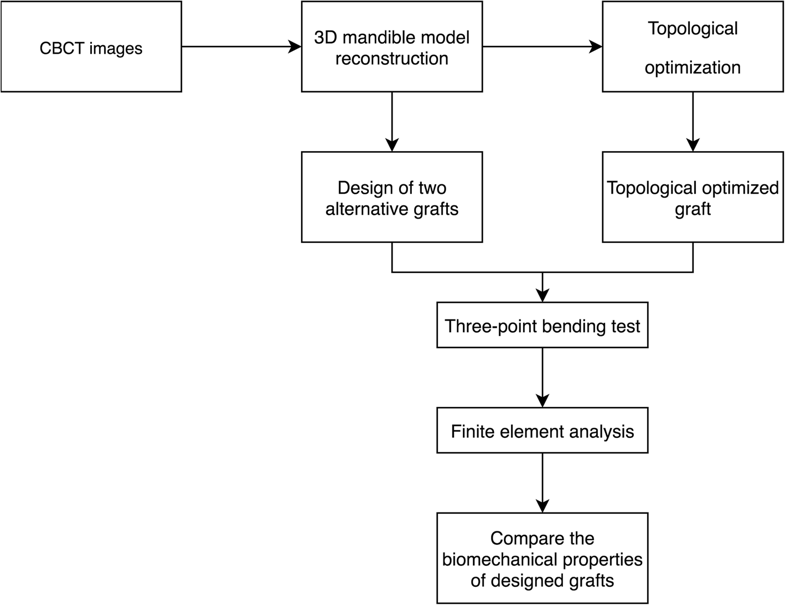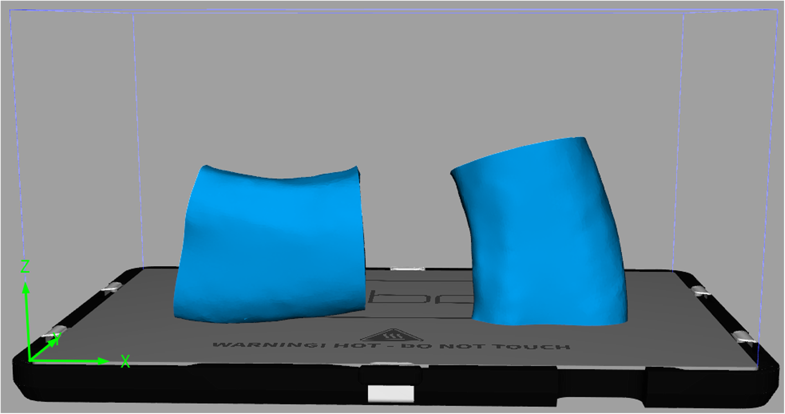Researchers outline findings from their recent study in ‘Analysis of biomechanical behavior of 3D printed mandibular graft with porous scaffold structure designed by topological optimization.’ Their main point is that in past years there have been glaring improvements needed for implants such as those created for the lower area of the jaw known as the mandible, due to hazards like patient rejection and infection.
While the mandible allows for successful mastication, it also lends solidity to the facial structure along the jawline. When an issue such as a tumor or infection arises and requires portions of it to be cut out, this can interfere with chewing as well as the patient’s appearance, which often has a close emotional connection to their identity. As implants are needed to help with jaw movement and aesthetics, complications often occur. This is common with anything artificial placed into the human body. Infection can easily occur, or the body may reject the implant, and especially if it is ill-fitting or ill-designed.
“The limitations of autografts are donor site morbidity, lack of bone volume for a large defect, and possible nerve damage. While allografts are limited by anatomical variations, genetic differences, and possible disease transmission. It is important to restore a critical-sized mandibular defect to its original size and shape to achieve desirable facial aesthetics and functional outcome for subsequent prosthetic reconstruction,” state the researchers.
One of the greatest benefits in 3D design and 3D printing, especially as it relates to the medical field, is the potential for creating patient-specific medical treatment and devices. The researchers point to current successes with such procedures, using implants created via FDM 3D printing and PLA as the material. Bioprinting with live cells generally takes success to another level as use of the patient’s own cells reduces the chances of rejection even further. Here, they used cone beam computed tomography (CBCT) to create a mandible—with one part acting as a control group and other blocks as experimental groups. Samples were printed with PLA, at 0, 45, and 90 degrees.
3D design of the mandible was created using Mimics software. The porous scaffold structures were comprised of defined mesh configurations, and an intricately connected microporous network. 3D printing of multiple sample grafts was completed on a CEL Robox 3D printer, with a 210 × 150 × 100 mm build space. The samples were then submitted to testing as the researchers examined how anisotropy affected the grafts, and their mechanical properties.
A three-point-bending jig was used to test the 3D printed beams:
“The results show good repeatability of samples in the same group. The yield stress, failure stress, failure strain, ultimate strength and flexural modulus were calculated for each sample to better understand the mechanical performance of the printed material,” say the researchers. “The yield stress was calculated using the method of 0.2% offset; failure stress corresponds to the stress at failure strain, ultimate strength obtained from the maximum stress value. Flexural modulus was along the linear portion of the stress-strain curve. All these five properties were evaluated for each printed graft.”
Direction of 3D printing was shown to have definite effect on mechanical properties at a 0-degree angle, with strains and cracking appearing as the load increased. The researchers obtained similar results with beams printed at 45-degree angles. This was not the case at 90 degrees though.
“After reaching the peak point, the crack propagates suddenly penetrated through the whole cross-section and the beam fractured into two parts,” state the researchers. “This is different from the flexural curves for the specimens printed at 0-degree or 45-degree angles, which show slight plastic failure before their rupture occurred.”
Overall testing showed that the 3D printed grafts offer required strength, stiffness, and porosity for such applications discussed by the researchers in their paper.
“Although the results of this study are based on PLA material, the proposed methodologies are also applicable to other promising 3D printing materials such as Polyetheretherketone (PEEK),” concluded the researchers. “3D printing technology and topological optimization are useful tools in fabrication and designing bone analogs for mandibular reconstruction.”
Find out more about materials being used today to 3D print implants and other devices. The key to these innovations is that they are patient-specific, offering a new level of care, with orthopedic implants, dental implants, and even devices made specifically for veterinary care. Discuss this article and other 3D printing topics at 3DPrintBoard.com.
[Source / Images: ‘Analysis of biomechanical behavior of 3D printed mandibular graft with porous scaffold structure designed by topological optimization’]Subscribe to Our Email Newsletter
Stay up-to-date on all the latest news from the 3D printing industry and receive information and offers from third party vendors.
You May Also Like
Gorilla Sports GE’s First 3D Printed Titanium Cast
How do you help a gorilla with a broken arm? Sounds like the start of a bad joke a zookeeper might tell, but it’s an actual dilemma recently faced by...
Nylon 3D Printed Parts Made More Functional with Coatings & Colors
Parts 3D printed from polyamide (PA, Nylon) 12 using powder bed fusion (PBF) are a mainstay in the additive manufacturing (AM) industry. While post-finishing processes have improved the porosity of...
$25M to Back Sintavia’s Largest Expansion of Metal 3D Printing Capacity Since 2019
Sintavia, the digital manufacturing company specializing in mission-critical parts for strategic sectors, announced a $25 million investment to increase its production capacity, the largest expansion to its operations since 2019....
Velo3D Initiates Public Offering in a Bid to Strengthen Financial Foundations and Drive Future Growth
Velo3D (NYSE: VLD) has been among a number of publicly traded 3D printing firms that have attempted to weather the current macroeconomic climate. After posting a challenging financial report for 2023,...



































